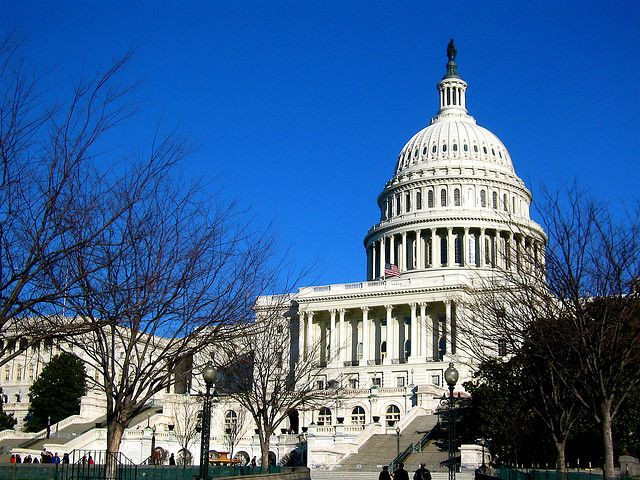When It Comes To Changing Medicare And Medicaid, Health Care Practitioners, Politicians, And Beneficiaries Can't Agree

Medicare and Medicaid, first enacted in 1965, provide health coverage to 111 million Americans: retirees, the poor, and the disabled. While the two programs play a significant role in health care and its reform, it will be difficult to enact changes due to the conflicting priorities of politicians and other policymakers, health practitioners and organizations, and the beneficiaries, a new published analysis asserts.
The authors, Dr. Drew Altman, Kaiser Family Foundation, and Dr. William H. Frist, former U.S. Senate majority leader, arrive at this conclusion after analysis of both programs. The authors outline various policy and financial issues for future debate, yet they overlook one, namely, the number of retired government workers who receive coverage under programs other than Medicare.
What are Medicare and Medicaid?
Medicare is a federal insurance program for the elderly. People pay into the program over the course of their lives and, once eligible, are entitled to coverage no matter their income or health status. Medicare covers more than 55 million Americans today. While most are 65 or older, about nine million are younger adults with permanent disabilities. The median income for Medicare beneficiaries, according to Altman and Frist, is $23,500.
Medicaid is a joint state and federal program which provides need-based insurance to about 66 million Americans with low incomes. Though Medicaid primarily provides for low-income families, it also covers some of the elderly, people with disabilities, and those requiring long-term care. The researchers found the median income for Medicaid beneficiaries is $15,000.
Roughly 10 million people, the authors state, receive assistance from both programs. By decade’s end, the authors project Medicare and Medicaid will serve a total of 139 million Americans. Perhaps the most important number, though, is $1 trillion: This is the total amount Medicare and Medicaid cost the federal government in one year (2013). Combined, Medicare and Medicaid account for nearly a quarter of the federal budget — 23 percent. They constitute 39 percent of all national health spending while generating 43 percent of hospital revenues.
Naturally, the current and future costs and roles of Medicare and Medicaid raise temperatures on both sides of the political divide. As characterized by the authors, Democrats traditionally favor guaranteed benefits and using the government’s purchasing power to leverage reform. Meanwhile, Republicans commonly advocate for privatization of insurance and switching to a defined contribution system to encourage consumer choice and cost sharing while limiting spending.
Going forward, the authors note, Americans will likely focus on whether the programs will remain open-ended entitlements, the degree to which the programs may be privatized, and the costs for services beneficiaries will be required to pay. Unusually, Altman and Frist do not include one important subject open to debate — the health care costs of retired motor vehicle agency workers, teachers, post office employees, and other government personnel.
Currently, a two-tiered system of health care benefits for retired workers exists: those who once worked for private companies pay for either Medicare benefits or private insurance benefits, while some of those who once worked a government job pay for benefits under separate programs.
Is Separate Equal?
The Federal Employees Health Benefits (FEHB) Program covers more than eight million federal employees, retirees, and their families, as reported by FactCheck.org. Meanwhile, each state pays employer health insurance coverage for 5,331,393 employees, while local governments cover a total of 14,273,847 employees, according to the Agency for Healthcare Research and Quality. Federal government retirees are still eligible for benefits under FEHB, and a quick perusal of the state governments programs found here demonstrates that some continue to serve retirees as well.
Granted, Altman, and Frist have narrowed the scope of their article to Medicare and Medicaid programs. Since, however, they extensively discuss tax payer expense and policy issues, the costs of providing separate tax-payer funded programs for retired federal, state, or local government employees must be addressed. After all, while many private companies offer health insurance to their current employees, very few of them allow employees to stay on the plan after retirement.
Looking into the future, then, anyone who is currently employed by a private company will not have the same options in retirement as their friends who work, say, at the Department of Justice. “Being able to keep your FEHB in retirement and to have the government continue to pay for 72 percent of your premiums is, in my opinion as a financial planner for federal employees, your best benefit,” wrote Micah Shilanski for FedSmith.
Source: Altman D, Frist WH. Medicare and Medicaid at 50 Years Perspectives of Beneficiaries, Health Care Professionals and Institutions, and Policy Makers. JAMA. 2015.
Published by Medicaldaily.com



























